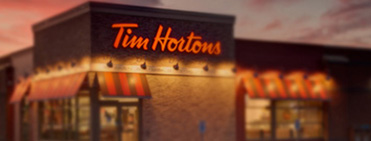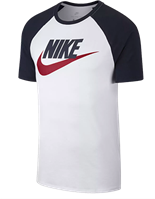Week 2.1 Organizational Foundation and Direction
Every organization relies on limited resources including human capital, physical capital, technological, and financial resources. In order to utilize these limited resources in the best possible way, organizations develop a strategy.
Strategy is an organization's long-term course of action designed to deliver a unique customer experience while achieving its goals.
Setting the strategic direction is critical for the future success and survival of the business. Marketers are not only concerned with setting the strategic direction but also with moving the organization there.
Strategic direction relies on the foundation of the organization. Successful organizations identify the reasons for the existence of the organization (why) along with the strategic direction (what) and combine these two to formulate strategies to achieve their goals (how). The figure below includes these elements as why + what = how.
Achieving Organizational Strategies.
©University of Waterloo
Organizational Foundation: Why Does It Exist?
An organization's foundation is its philosophical reason for its existence. It simply explains why it exists. For that reason, it rarely changes.
Effective organizations use their foundation to guide their employees through three elements:
- Core Values
- Mission
- Organizational Culture
Core Values
Core values are the fundamental, passionate, and enduring principles that guide an organization’s conduct over time.
Usually, core values are developed by founders or senior management. They are timeless, which means that they do not change due to short-term environmental changes or short-term financial concerns.
Core values represent the firm's heart and soul and serve to inspire its stakeholders. Stakeholders are all the parties that are interacting with the organization in any level.
Stop and Think Question: Who are stakeholders? Think about the definition above and make a list of stakeholders before revealing the answer.
Click to reveal answer.
Stakeholders include:
- employees
- shareholders
- board of directors
- suppliers
- distributors
- unions
- government
- local communities
- customers
Mission
Mission is a statement of the organization's function in society, often identifying its customers, products, and technologies. Mission is usually used interchangeably with vision.
A mission statement should be clear, concise, meaningful, inspirational, and long-term. A mission statement exhibits a clear, challenging, and compelling picture of an envisioned future. It is possible to add a social element to the mission statement to reflect an ideal that is morally right and worthwhile.

Retrieved from
http://www.timhortons.com/ca/en/corporate/index.php
Example: Tim Hortons Mission Statement
“Our guiding mission is to deliver superior quality products and services for our guests and communities through leadership, innovation and partnerships. ... Our vision is to be the quality leader in everything we do.”
Organizations communicate their core values and mission to their stakeholders in many ways. For example, some organizations print these statements on cards and display them in their stores/offices. Many businesses include their statements on their websites.

Retrieved from
https://www.nike.com/ca/t/
sportswear-t-shirt-2KTrYqp3
Example: Statement from Nike website.
“Nike’s mission statement is "To bring inspiration and innovation to every athlete* in the world."
Organizational Culture
Organizational culture refers to a set of values, ideas, attitudes, and norms of behaviour that are learned and shared among the members of an organization. Every organization has its own culture that relates to "the way of conducting business."
Organizational Direction: What Will It Do?
When we define what the organization will do, first we need to state the type of business they are running.
Business
A business describes the clear, broad, underlying industry of an organization's offering.
When describing the business, an organization should look at the set of organizations that sell similar offerings. One potential problem in the process is that some organizations define their business too narrowly.
Example:

ChrisHepburn/E+/Getty Images
Railroads in the first half of the twentieth century defined their business simply as follows: “We are in the railroad business!” They thought railroads were a business on its own and there are no other segments of the type of business they are in that would compete with them. Their business definition should have been the transportation business rather than just the railroad business. When they defined their business too narrowly, they missed out on identifying their competition and as a result they failed to develop strategies to survive. Many railroads eventually merged or went bankrupt.
Stop and Think Question: Who are the competitors of railroads in the transportation business? List potential competitors before clicking reveal.
Click to reveal.
Hein Nouwens and MicrovOne/iStock/Getty Images
The competitors of railroad include:
- cars
- trucks
- bus lines
- pipelines
- airlines
Business model is the strategies an organization develops to provide value to the customers it serves.
Companies might need to change their business model in order to survive in competitive markets. Technological innovation is a trigger for the business model change.

thebroker/iStock/Getty Images
Example: Newspapers are looking for a new business model as most people are accessing news online with little-to-no cost. The number of subscribers to paper copy newspapers has been declining dramatically. Their new business model involves charging fees for access to their specialty articles and news online as well as selling ads on their online platforms.
Goals
Goals (or objectives) are statements of an accomplishment of a task to be achieved, often by a specific time. When setting the goals, we pay attention to SMART criteria:
- Specific: give a precise description of what is to be achieved
- Measurable: give a quantitative value to measure the progress
- Attainable: be achievable, but challenging
- Relevant: be pertinent to the organization's mission
- Time-based: have a deadline for completion
Stop and Think Question: Does the following goal satisfy specific, measurable, time-based criteria?
"Our goal is to increase our sales continuously for the next 2 years."
Click to reveal answer.
This goal is time-based since it gives a timeline; however, it is not specific as it does not identify the percentage increase in sales. It is measurable as it is fairly easy to see whether sales are declining or not.
Businesses can pursue several different types of goals. Increasing profit and sales are commonly followed goals but there are many other goals. The following list shows the types of goals firms might set.
- Market share: the ratio of sales revenue of the firm to the total sales revenue of all firms in the industry. Firms might have a goal of maintaining or increasing their market share.
- Quality: firms might set the goal of producing the highest quality products in their industry. It is a measurable goal with quality control metrics.
- For example, Loblaws' goal is to offer customers high-quality food products and a quality shopping experience.
- Customer satisfaction: customers are the center of attention in successful visionary organizations. Increasing customer satisfaction is a measurable goal as many companies collect feedback from customers with rankings of their services and products. Some companies link customer satisfaction rankings to their employees’ bonuses.
- For example, at Maritime Life Assurance Company in Halifax yearly bonuses are paid to employees based on customer satisfaction data.
- Employee welfare: companies recognize the importance of welfare of their employees. Good employment opportunities and working conditions help improve productivity in the workplace which results in higher customer satisfaction and higher profits.
- For example, Great Little Box Company provides a fully equipped fitness facility, outdoor sand volleyball court, book exchange library, and rooftop deck. It also provides university tuition subsidies to employees and scholarships for children of employees.
- Social responsibility: a firm may seek to promote increasing overall welfare, even at the expense of profits. Making responsible decisions in their business and practicing sustainable development in their production, many firms set their goals according to social responsibility.
- For example, 3M developed an innovative program called 3P (Pollution Prevention Pays). The goal is to reduce harmful environmental impacts while making profit doing so. Based on the company’s estimates, the 3P program has eliminated more than 3.5 million pounds of pollution and saved the company 1.5 billion dollars. 3M also adopted a life cycle management approach. This approach includes the supply chain and manufacturing as well as disposal and recycling. It minimizes energy consumption and the overall environmental footprint. 3M Canada is one of the Top 50 Socially Responsible Corporations in Canada.
Critical Thinking Question: Will profit-driven organizations adopt and implement a 3P kind of program? Think about environment versus profit/economic growth.